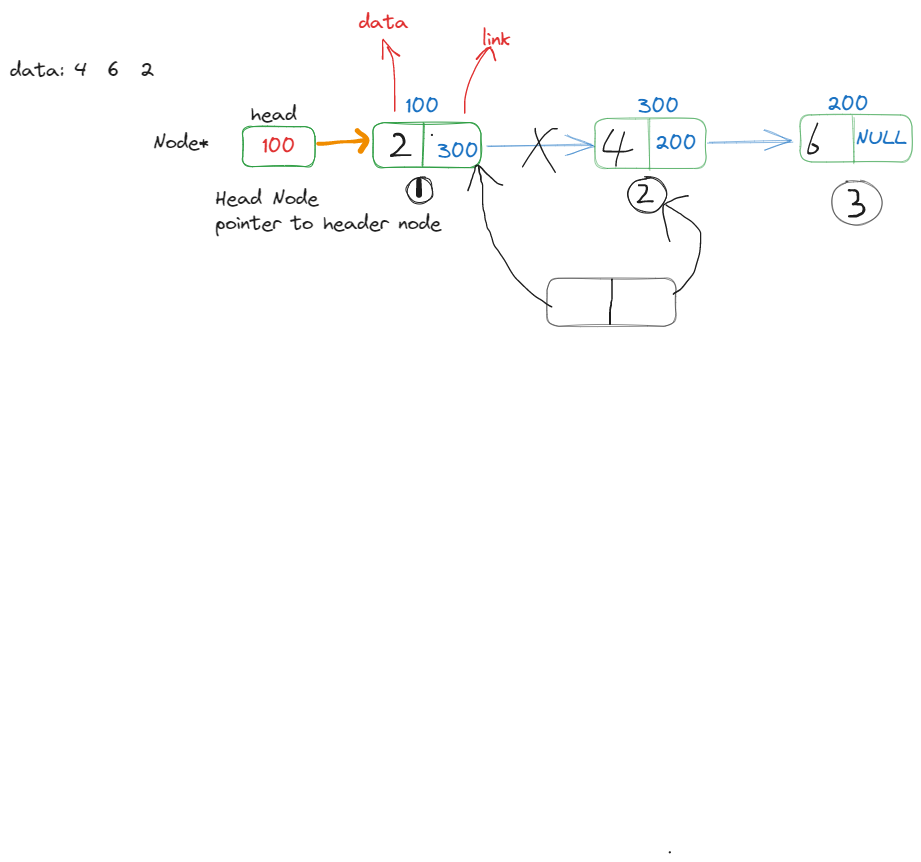之前我们的链表代码只能从头部插入节点,也就是通过修改head指向新节点,然后新节点指向head之前指向的节点达到增加头节点的目的。

我们将参照上图,演示如何在任意位置插入节点。我们要插入任意节点首先是这个节点,存在可插入位置,比如我要插入2,那么就必须存在1这个位置,我这里不讨论这种意外情况。下面我们就在2的位置插入一个节点;
在2的位置加入节点,,我们肯定需要到1的位置,也就是n-1的位置,n是我们要增加节点的位置。通过一个for循环和一个临时节点,用临时节点先指向head,我们指向n的前一个节点,因为现在我们指向的是head,所以我们要减2,代码如下:
Node* temp1 = head;
for (size_t i = 0; i < n - 2; i++)
{
temp1 = temp1->link;
}这样temp1就是当前1的位置,我们就可以链接n-1节点和新增节点(首尾链接),代码如下:
temp->link = temp1->link;
temp1->link = temp;
这里我们需要注意的是,插入任意节点只有存在n-1节点时候,才可以插入,所以我们要考虑n是1的情况,也就是之前章节我们提到的要插入头节点的位置。
Node* temp = new Node;
temp->data = x;
temp->link = NULL;
if (n == 1)
{
temp->link = head;
head = temp;
return ;
}粘出来全部代码,大家自己运行看一下
#include<stdio.h>
#include<stdlib.h>
#pragma warning (disable:4996)
struct Node
{
int data;
struct Node* link;
};
struct Node* head;//头节点
void Insertnew(int x, int n);
void Printf();
int main()
{
head == NULL;
Insertnew(2, 1);
Insertnew(4, 2);
Insertnew(7, 1);
Insertnew(10, 2);
Printf();
}
void Insertnew(int x, int n)
{
Node* temp = new Node;
temp->data = x;
temp->link = NULL;
if (n == 1)
{
temp->link = head;
head = temp;
return ;
}
Node* temp1 = head;
for (size_t i = 0; i < n - 2; i++)
{
temp1 = temp1->link;
}
temp->link = temp1->link;
temp1->link = temp;
}
void Printf()
{
Node* temp = head;
printf("List is");
while (temp != NULL)
{
printf(" %d ", temp->data);
temp = temp->link;
}
printf("\n");
}